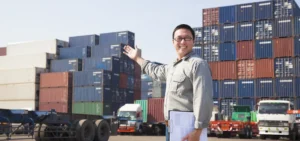
Last Mile Logistics in Asia: Overcoming Challenges and Fueling Growth
Introduction
Last-mile logistics, the final step in delivering products to consumers’ doorsteps, plays a pivotal role in the success of supply chains and e-commerce. In Asian countries, this stage of the logistics process presents a unique set of challenges due to dense populations, diverse geographies, and varying levels of infrastructure development. Despite these hurdles, last-mile logistics in Asia has been witnessing significant growth and transformation. In this essay, we will delve into the challenges faced by Asian countries in last-mile logistics and the remarkable growth this sector is experiencing.
Challenges in Last Mile Logistics in Asian Countries
- Diverse Geographies: Asian countries encompass vast and diverse terrains, from mega-cities to remote rural areas. Navigating these diverse landscapes presents logistical challenges, particularly when it comes to establishing efficient delivery routes.
- Traffic Congestion: Many Asian cities are notorious for their traffic congestion, which can cause delays and hamper the timely delivery of goods. This is a major concern, particularly in densely populated urban areas.
- Addressing Systems: Variability in addressing systems across different Asian countries and even within regions can lead to delivery errors and inefficiencies. Accurate addressing is crucial for successful last-mile logistics.
Infrastructure Development: Disparities in infrastructure development between urban and rural areas can affect the accessibility and reliability of transportation routes. Poor road conditions and lack of proper facilities can lead to challenges in last-mile deliveries. - Consumer Expectations: The rapid growth of e-commerce has raised consumer expectations for fast, reliable, and flexible delivery services. Meeting these expectations can be demanding for logistics providers.
The Growth of Last Mile Logistics in Asia
Despite these challenges, last-mile logistics in Asia is growing at an unprecedented rate. Several factors contribute to this remarkable growth:
- E-commerce Boom: The surge in e-commerce activities in Asia has been a major driver of last-mile logistics growth. Consumers are increasingly shopping online, necessitating efficient last-mile delivery solutions.
- Technology Integration: The integration of advanced technologies, such as route optimization software, real-time tracking, and automated sorting systems, is enhancing the efficiency and accuracy of last-mile deliveries.
- Innovative Delivery Solutions: Companies are innovating by implementing alternative delivery methods, such as drones and electric vehicles, to navigate the challenges of traffic congestion and environmental concerns.
- Partnerships and Collaborations: Collaboration between e-commerce platforms, logistics providers, and local retailers is creating synergies in last-mile logistics, resulting in cost-effective and scalable solutions.
- Government Initiatives: Several Asian governments are investing in infrastructure development, which benefits last-mile logistics by improving road networks and transportation hubs.
Conclusion
According to Business Market Insights, the Asia Pacific’s last-mile delivery market is projected to exhibit significant growth, increasing from US$ 500.3 million in 2018 to reach US$ 2,292.6 million by 2027. This expansion is anticipated to be driven by a compound annual growth rate (CAGR) of 19.0% between 2019 and 2027. Despite the distinctive challenges encountered in last-mile logistics within Asian countries, these obstacles have not hindered the sector’s impressive evolution and expansion. The proliferation of e-commerce, the seamless integration of advanced technology, inventive delivery solutions, collaborative partnerships, and government backing all contribute to positioning the Last Mile Delivery market in Asia for substantial growth.





